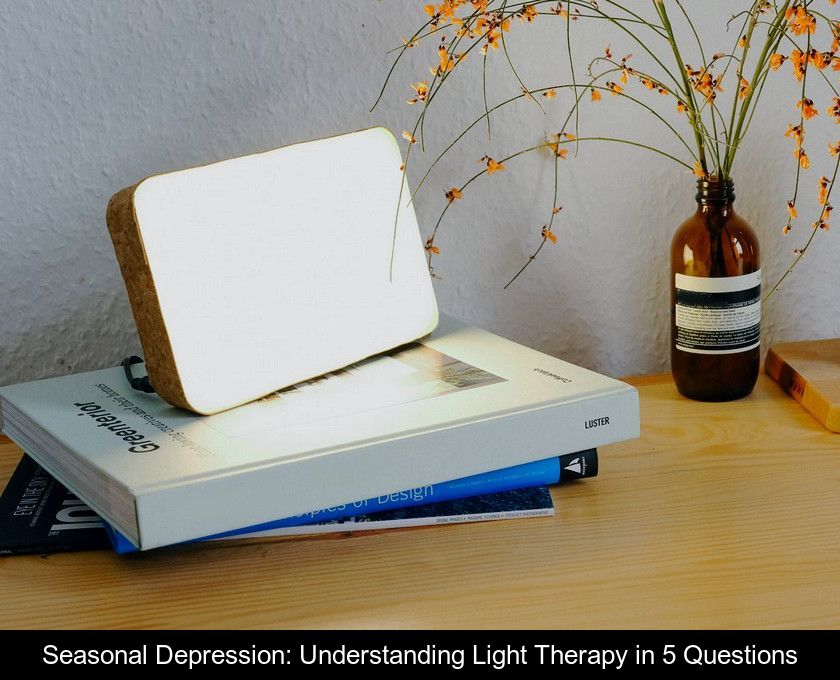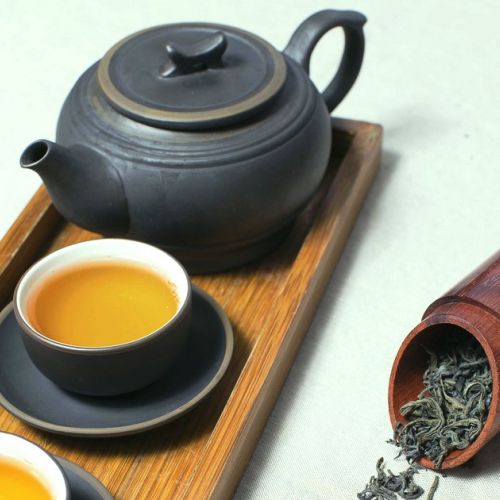Seasonal Depression: Understanding Light Therapy In 5 Questions
When the days get shorter, it's quite common to feel down. In some people, the lack of light in autumn can even cause a real depressive state. Light therapy is a 100% natural method that uses exposure to very bright light to treat the symptoms of the winter blues. We are going to explain the benefits of this method in 5 questions.
What is light therapy?
The term "light therapy" means therapy through light. This therapeutic practice, also known as phototherapy, is based on the idea that light perceived by our eyes has a direct influence on our health, both physiologically and psychologically.
Contrary to what one might think, light is not only used for vision but also plays the role of regulator of our "biological clock" through a part of our brain called the hypothalamus.
2- In what cases should light therapy be used?
Light therapy is indicated in the treatment of seasonal affective disorders or winter depression. This problem, related to low natural light levels, is characterized by a depressive state, persistent fatigue, a need for isolation, and a loss of interest and motivation.
In affected individuals, symptoms appear in October and disappear with the arrival of warmer days. The explanation for the phenomenon is simple: the sunlight diffused by the sun drops from 50,000 lux in summer to 1,500 lux in autumn and only 500 lux in winter (lux being the unit of measurement for brightness).
However, this lack of light can cause hormonal disturbances: in periods of low brightness, the pineal gland, located in the cerebellum, secretes melatonin, a hormone that promotes sleep and causes a feeling of fatigue detrimental to our mood and the continuation of our daily activities.
This disruption of our biological clock could also explain why, in winter, we crave comforting and sugar-rich foods.
Moreover, light therapy has proven its effectiveness against certain sleep disorders, in people who work night shifts or who suffer from the effects of jet lag.
How to do light therapy sessions?
Today, it is possible to have light therapy sessions at home by exposing oneself to a very bright lamp that mimics the rays of the sun. The price of light therapy lamps has become more accessible and their use is very simple.
It is recommended to place the lamp 1 meter from your eyes and position yourself at a three-quarter angle to its light to avoid being dazzled. Just expose yourself to this light for 30 minutes per day, preferably in the morning so as not to disrupt your sleep rhythm.
More specifically, exposure should be in the morning to treat seasonal blues and in the evening to promote sleep in case of sleep disorders.
Patients prone to seasonal depression should expose themselves diligently every day between November and Easter, except on very sunny days such as when skiing for example.
What are the contraindications of light therapy?
The effectiveness of light therapy is linked to the dose of light received, so this method does not work for people with cataracts because the condition prevents photons from penetrating the lens.
It is essential to seek the advice of an ophthalmologist for anyone with eye problems such as age-related macular degeneration (AMD), glaucoma, or a retinal lesion.
Finally, in patients with psychiatric issues who are aggressive or psychotic, exposure to intense light (ranging from 2,500 to 10,000 lux) can trigger anger outbursts and hallucinations.
Note: if you find that this method disrupts your sleep cycle or triggers another adverse effect, stop the sessions and seek advice from your doctor.
Is light therapy dangerous?
Unlike UV tanning booths, light therapy lamps do not emit ultraviolet rays. Therefore, they carry no risk of sunburn or skin cancer... They are safe for the eyes and skin, especially since it is not necessary to look directly into the light for the session to be effective. You can relax or work while you are exposed to the light.
By simply placing your face near this type of lamp or wearing light therapy glasses, you help your brain to secrete less melatonin, the sleep hormone, and more serotonin, the hormone of activity and good mood. A daily light therapy session is enough to feel a boost in vitality and a positive effect on mood after just one week of treatment.











